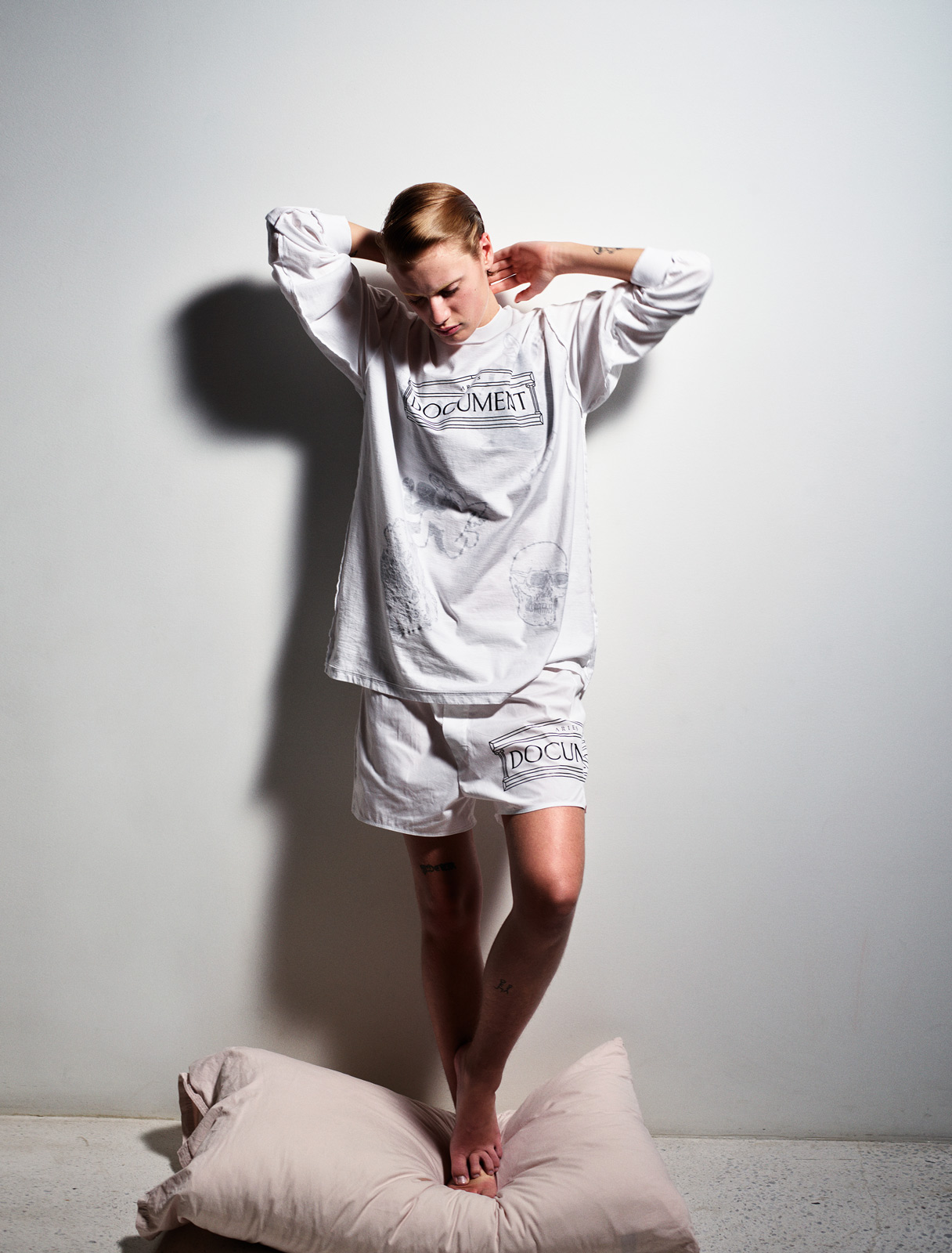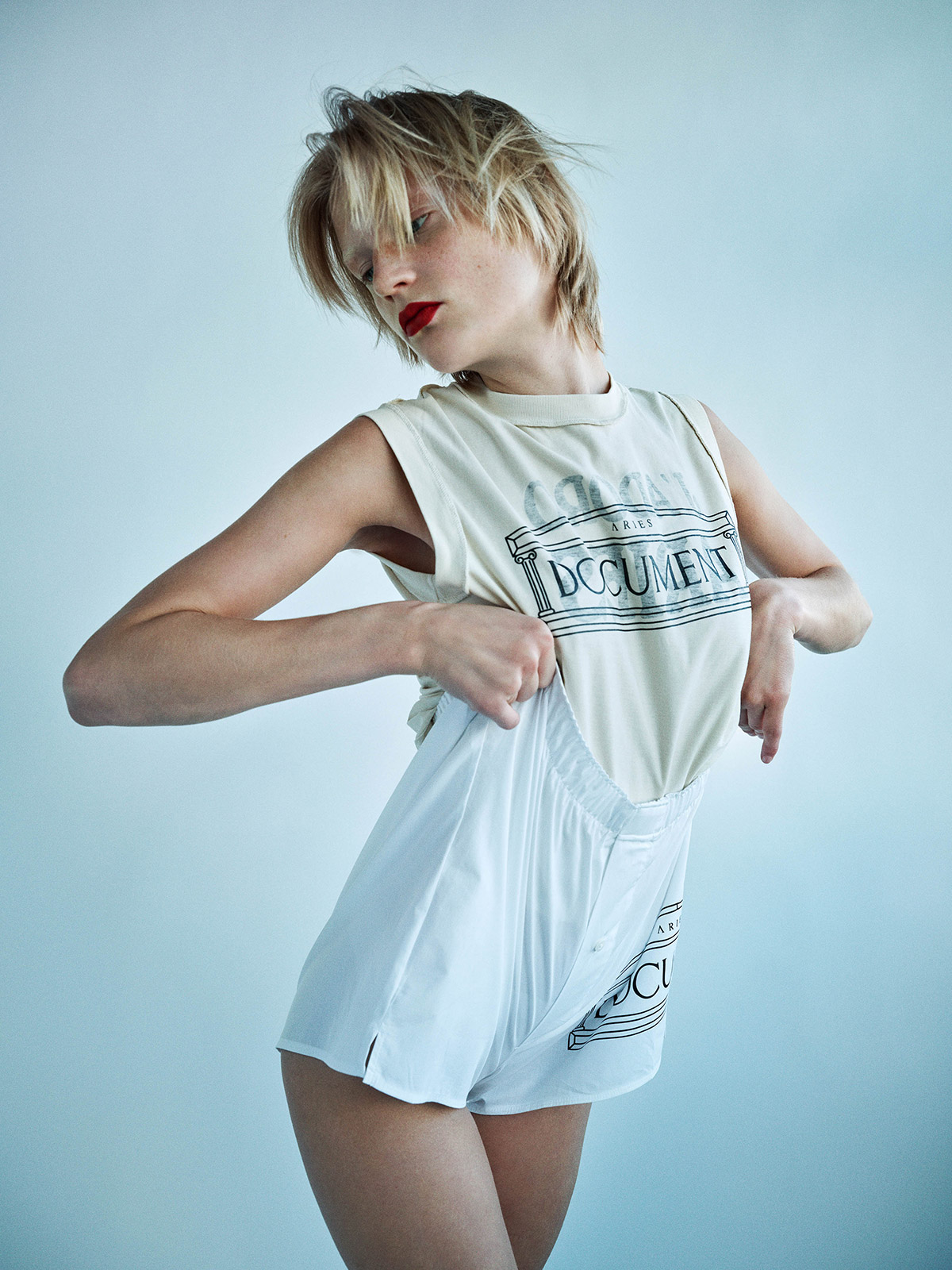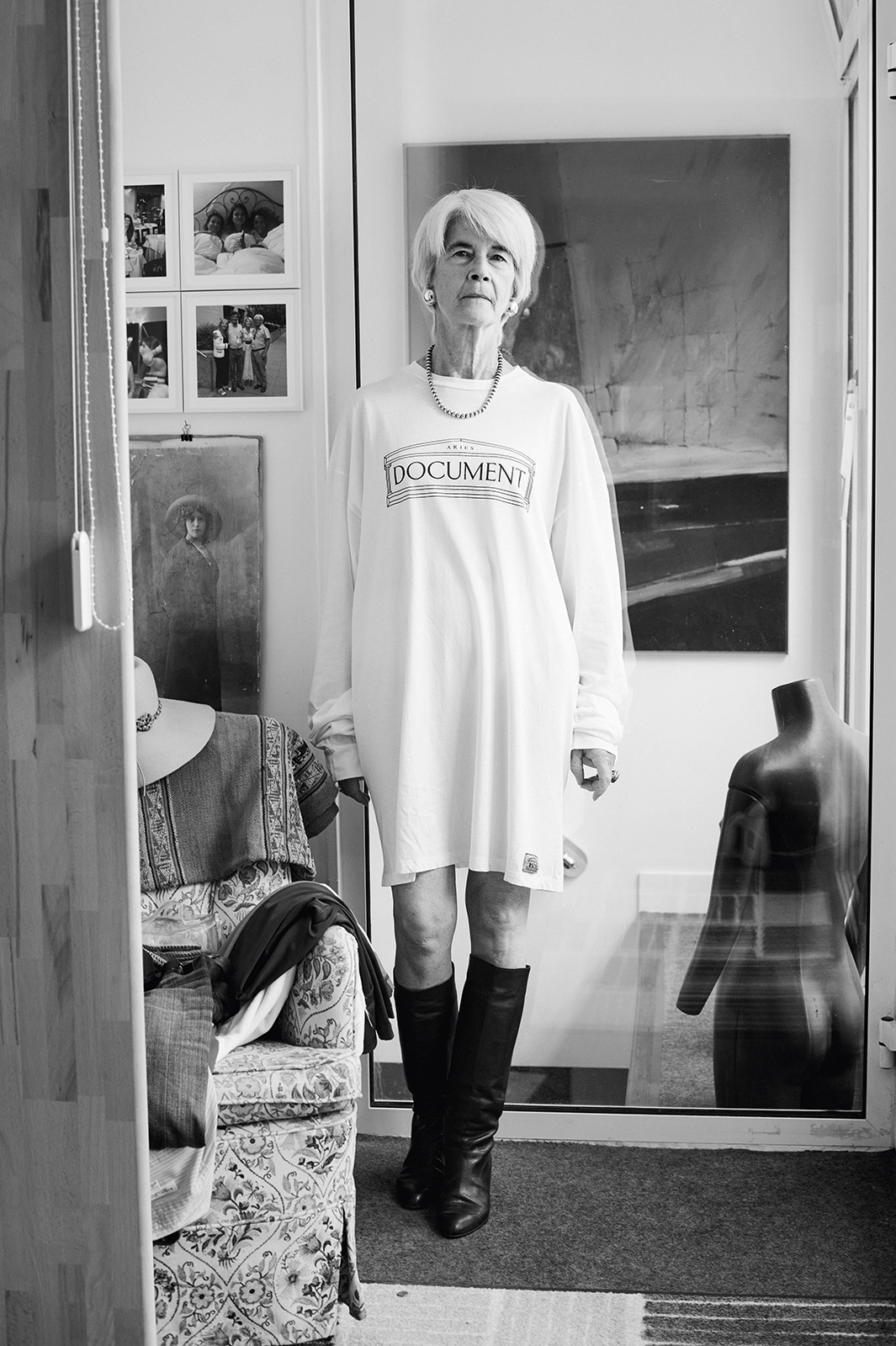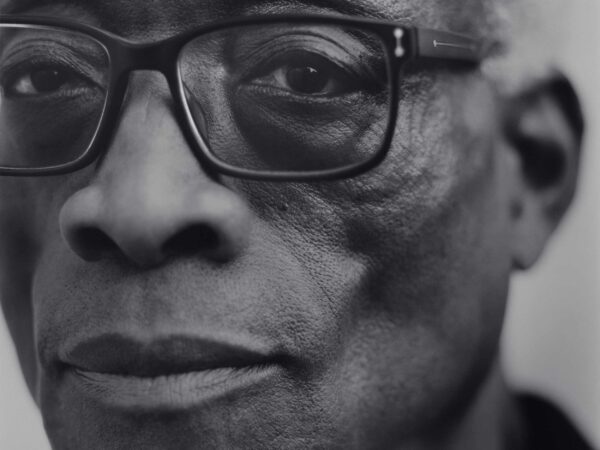
For Document’s Winter/Resort 2023 issue, the designer delves into the persistent allure of subculture and subverting the all-knowing algorithm
“Above all things, be a man,” reads a t-shirt, its text framing a Top Gun-esque figure flexing his bicep. Sofia Prantera’s Aries is littered with hyper-specific references to various phases of the designer’s life: animal prints, Greco-Roman temples, pentagrams, skeletons, camouflage, American football iconography. Each image is torn from a place, a community, a culture; she’s unafraid to remix the familiar with the unfamiliar, combining her own perspective with rigorous design, which seamlessly merges skatewear and streetwear with luxury.
Multilingual and multicultural—with interests spanning the classics, mathematics, and fashion—Prantera left Italy for Central Saint Martins in the ’90s. The designer found excitement in toying with the in-between, first as an Italian in England, but more critically as a woman submerging herself in the male-centric skating world and equally subversive rave culture. These scenes didn’t mesh naturally with Prantera’s personality, but they called to her as a refuge from the UK’s more sedentary world of design. They served as the breeding ground for a mindset that remains distinctly Aries—one that is always in flux, continually learning from and responding to emergent ideologies of youth culture.
By balking labels (and foregrounding logos), Aries continues to challenge our notions of what fashion—especially luxury fashion—should be. But that classification pushes the brand into more serious territory than it actually lives in; Aries, like Prantera herself, isn’t afraid to lean into the jocular, making use of the ultra-cool cuts and lived-in aesthetics common to streetwear. She’s taking the piss out of religious symbols, cultural traditions, and gender norms. Her ethos is indisputably punk.
Ahead of Aries’s tenth anniversary, Prantera joined Document to discuss the persistent allure of subculture, the brand’s ideological conception, and subverting the all-knowing algorithm.
Colin Boyle: When you started Aries, you tapped into subcultures by physically experiencing them. Now, when they manifest online, it feels like they are formed in this extremely algorithmic way.
Sofia Prantera: I was really shocked with TikTok—with its streams of belonging. If this had happened [when I was young], we would have been horrified of being categorized in any way, shape, or form. Now, when you’re engaging with TikTok, you’re engaging with your [group]; you are categorized by the algorithm immediately. You’re the indie girl, or the emo boy, or whatever. Like, oh my God, that’s so tragic.
Colin: From what I understand, the Aries DNA requires that new ideas be continuously injected.
Sofia: The moment you’re expected to do something is the moment you shouldn’t. When I started Aries in 2012, we were a very small business, and I was trying to adapt to new ways of running things. I remember this guy asking, ‘What are you? What is your selling point?’ I was like, ‘I don’t know.’ I don’t want to sit there and say, ‘We’re appealing to this generation, and this is how we’re doing it.’
Colin: Yeah, I think you’re right; the basis of subculture is looking at the mainstream and saying, ‘This isn’t for me.’ Or, if you don’t look like someone who represents popular culture, you’re locked out—and so you have to make your own world.
Sofia: There are not many people who work in fashion who are not just regurgitating subculture. Fashion gets commercialized when [people] are exploited; very little commercialized fashion comes from true subculture. And usually, those brands kind of self-implode, because the people who actually [lived] it get bought out. There are a few people—like Demna or Marc Jacobs—who came from subculture, and made something extremely important. People can relate to them [on a broad scale]. I think that’s part of our manifesto; I don’t want to appeal to just one crowd.
Like an art project, it’s all [in] how I approach it. ‘How do you create? How do you grow this brand into something that’s self-sufficient?’ We grew organically, but you always [have to ask yourself], ‘How do you make it a success without flattening what you’re trying to convey?’ I don’t want to be reduced to a commercial thing. I want to have a message behind all of my output.
“Fashion gets commercialized when [people] are exploited; very little commercialized fashion comes from true subculture. And usually, those brands kind of self-implode, because the people who actually [lived] it get bought out.”
Colin: How, then, do you approach collaborations with bigger brands that have an eye towards—and, perhaps, priorities in—commercial appeal.
Sofia: Sometimes, bigger brands forget why they’re collaborating with smaller ones. When you start working with someone who’s [larger-scale] than you, you’re dealing with many different people—you don’t know exactly who’s called you, and why they’ve called. It’s [important to] set things straight from the beginning and say, ‘You’ve got to think about why you’re collaborating with us.’ And it’s usually to reach a new audience; they want our channels of communication, so that they can take risks. Our consumer doesn’t want something boring. The reality is that, if they’re going to you, they are looking for different ways of doing things.
I think, in that way, we’ve been really successful in [terms of] collaborations. It’s almost like a game. Like, ‘This brand represents this, what am I going to do [with it]?’ We get to play with that brand’s aesthetic, which is sometimes extremely fun. It’s a bit like dressing up. Like, ‘What New Balance shoe is Aries?’
Colin: I was obsessed with the video of that New Balance shoe on a rocket, because it’s sort of parodying this idea of Americana.
Sofia: That was one of the most fun collaborations we’ve done, because New Balance was very free and didn’t question—at any point—David [Sims’s] idea of shooting something in the sky. We did that campaign for 6,000, and there were no health and safety protocols whatsoever [laughs]. We found this guy to do the fireworks; he was literally a crazy pyromaniac, so it ended with everything exploding. But they’re not always that fun. Sometimes, you have more restrictions, or people worry that you’re alienating their customer base. They’re interesting challenges, because they allow you to become someone else for the duration [of the collaboration].
“I think the idea was ‘rebirth’—a new brand that comes from nothing, which lives through the ruins and destruction.”
Colin: You said you majored in classical studies. Is that where a lot of your symbols and graphics come from? Like the temples, the pillars…
Sofia: When I started Aries, we were [based] in Rome, which inspired the idea of Classicism as our tempo—as the symbol of what we were doing. The idea was partly [intended to emulate] classic Italian brands. It’s a very, very easy way to give a brand authenticity—like gold, gilded columns—but we were going for a tongue-in-cheek version of it. Like, ‘I’m being Versace, but it’s also a joke.’
There were lots of classical references, like the Mouth of Truth, which is in Rome, and the rat, a symbol of decadence. I think the idea was ‘rebirth’—a new brand that comes from nothing, which lives through the ruins and destruction. When we started, it was the beginning of social media; there was a bit of Facebook, and emojis weren’t really a thing. We tapped into modeling [the brand off] symbols. In 2009, it was very much about unbranded clothes—fashion being dire and safe. Everyone was wearing small logos, which is kind of happening again. Using obvious, explicit branding, in combination with this idea of Classicism, positioned the brand in a way where people thought it was more established than it was.
Colin: Replacing the name of the brand with symbols must have been formative in establishing the Aries identity—even to those who maybe weren’t already familiar.
Sofia: Communicating with images alone meant Aries was more visible than other brands—because it is so direct. That’s the power of branding; you’re not just communicating a symbol, but also—through people reposting and things like that—you’re continuously seeing it. It’s really powerful. As a society, we’re used to [this language]. We communicate through images. Even cavemen needed images. With Instagram, the idea of connecting through snapshots of life—visual references—became even more important. And Aries kind of grew with that.
Colin: Absolutely.
Sofia: And it’s always tongue-in-cheek. When I started working at Slam City, I’d buy all these brand books, because logos are so interesting. People don’t really spend that much time doing their logos; they just write their name out. I was never that interested in creating an identity that was completely separate from myself.
A [singular] image holds so much power. If your brand stands for something interesting, then the logo [should] encompass that—it’s all that people see.






















